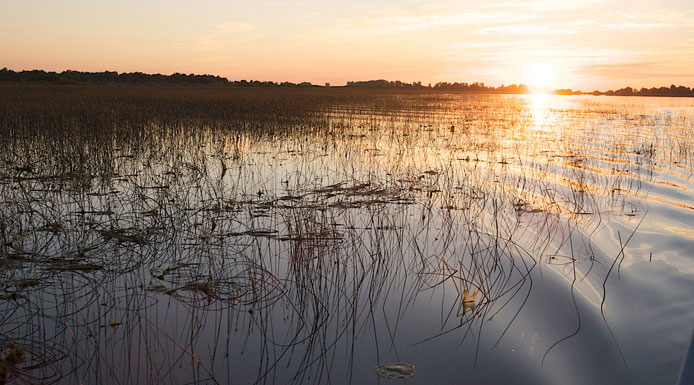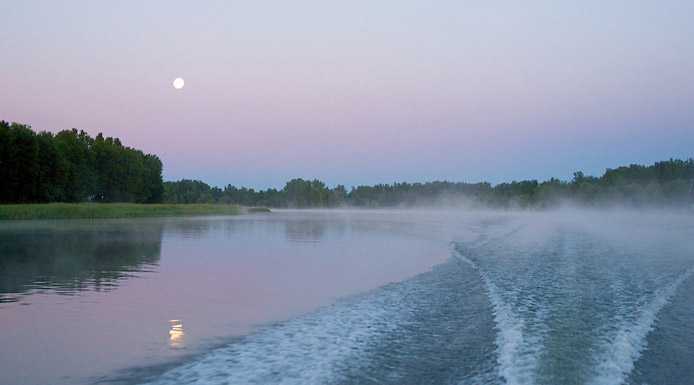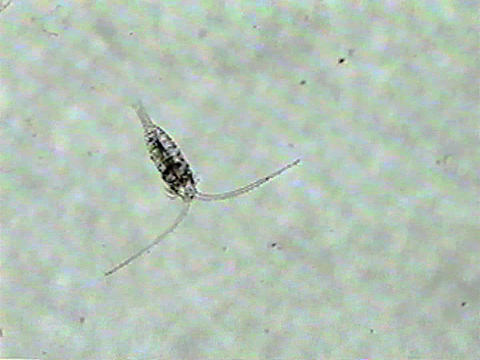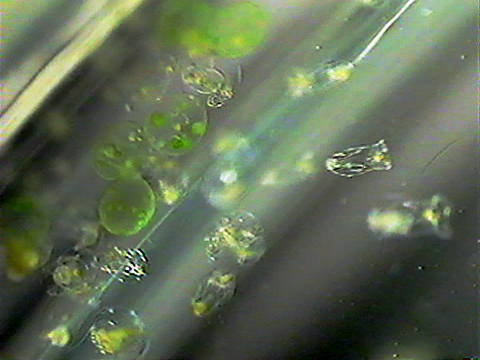LIFE UNDERWATER
- VEGETATION
- PLANKTON
- PHYTOPLANKTON
- ZOOPLANKTON
- BENTHOS
- FISH
- AMPHIBIANS AND REPTILES
PLANKTON - ZOOPLANKTON - DISTRIBUTION
![]() FLASH PLAYER IS REQUIRED TO SEE THE CONTENT OF THIS PAGE
FLASH PLAYER IS REQUIRED TO SEE THE CONTENT OF THIS PAGE

Zooplanktonic organisms use a great variety of modes of locomotion. Most species migrate vertically during the day. By day, they remain in deeper water in order to avoid being detected by predators.

At night, they rise to the surface to feed on phytoplankton in the upper layer of water.
VIDEO - 0 min 08 s
Cladocerans (Daphnia) swim using their long, feathered antennae. These tiny crustaceans move jerkily in little jumps, and are therefore commonly known as water fleas. We can also see a cyclopoid crustacean. It swims using its antennae and especially its tail, which seems to whip the water.
This page contains videos that require Javascript and Adobe Flash Player to be activated. If you wish not to activate these functions, we offer pictures from the original videos.

VIDEO - 0 min 07 s
Calanoid copepods have two different modes of locomotion. They can row continuously with their small antennae or swim quickly and jerkily using their long antennae and abdomen.
This page contains videos that require Javascript and Adobe Flash Player to be activated. If you wish not to activate these functions, we offer pictures from the original videos.

VIDEO - 0 min 08 s
Rotifers swim using the crown of cilia around their mouth.
